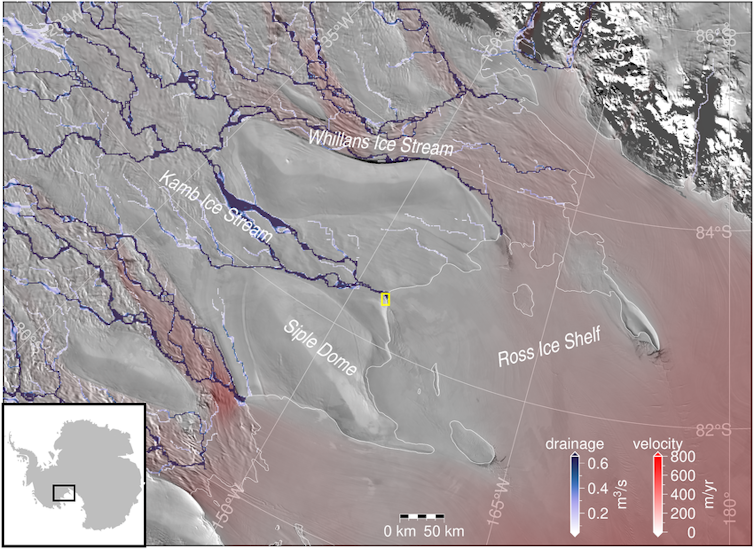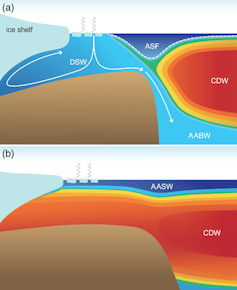Science
Watch SpaceX launch satellites for OneWeb, Iridium after abort today for free
|
|
A SpaceX rocket soared into the California morning sky to deliver two mini-fleets of satellites into orbit, then landed at sea on Friday (May 20), capturing amazing video along the way.
The Falcon 9 rocket, topped with 21 satellites for the companies Iridium and OneWeb, lifted off from Space Launch Complex 4 East Vandenberg Space Force Base in California at 9:16 a.m. EDT (1316GMT; 6:16 a.m. local California time).
The successful launch came one day after a last-minute abort on Friday, when SpaceX called off the flight just 55 seconds before liftoff.
“Since then, the teams have completed checkouts on the vehicle and the ground systems and we’re looking good going into today’s attempt,” SpaceX operations engineer Siva Bharadvaj said during the company’s launch commentary.
Indeed, the launch went smoothly aside from foggy ground weather, with the Falcon 9 rocket punching through the low clouds over Vandenberg and soaring into a stunning morning sky, broadcasting stunning video of its Earth departure (and subsequent return).
The Falcon 9’s first stage returned to Earth about nine minutes after liftoff, touching down on the SpaceX droneship Of Course I Still Love You stationed in the Pacific Ocean. It was the 11th launch and landing for this particular booster, and the 193rd landing of a SpaceX orbital class rocket, according to Bharadvaj and a mission description.
The rocket’s upper stage, meanwhile, continued carrying the satellites — five belonging to Iridium and the other 16 to OneWeb — to low Earth orbit. They were all expected to be deployed over a 30-minute period scheduled to begin about an hour after liftoff. SpaceX used a Merlin engine with a shortened nozzle on this flight due to its payload needs.
“The shortened nozzle made its debut on the Transporter 7 mission,” Bharadvaj said. “It’ll continue to be used on missions that don’t need quite as much performance to get to their final destination.”
Fifteen of the OneWeb satellites will further build out the company’s broadband constellation in low Earth orbit. The 16th is a technology demonstrator known as JoeySat.
“JoeySat contains several new technologies, including a digitally regenerative payload and demonstration of multi-beam electronically steered phased array antennas,” OneWeb wrote in a mission description.
SpaceX has already launched three batches of OneWeb internet satellites, sending 40 spacecraft skyward on each of those previous missions.

RELATED STORIES:
The five Iridium satellites are spares that will provide further backup for the company’s 66 currently operational telecom satellites. (Iridium already has nine spare satellites in orbit.)
“Our constellation is incredibly healthy; however, the spare satellites have no utility to us on the ground,” Iridium CEO Matt Desch said in a statement in September 2022, when this SpaceX launch was announced.
“We built extra satellites as an insurance policy, and with SpaceX’s stellar track record, we look forward to another successful launch, which will position us even better to replicate the longevity of our first constellation,” he added.
This launch will be the second in rapid succession for SpaceX. The company also launched 22 of its own Starlink “V2 mini” internet satellites from Florida’s Space Coast on Friday.
And SpaceX isn’t finished for the weekend.
On Sunday (May 21), the company will launch its third rocket in three days, this time to fly four private astronauts to the International Space Station for the commercial company Axiom Space. Called the Ax-2 mission, the flight is commanded by former NASA astronaut Peggy Whitson, with paying customer John Shoffner serving as pilot.
Saudi Arabia is flying two astronauts on the mission, Ali AlQarni and Rayyanah Barnawi, with Barnawi becoming the first Saudi woman to fly in space. You can follow the mission on Space.com with our Ax-2 mission live updates page. Liftoff is set for 5:37 p.m. EDT (2137 GMT) on Sunday.
Saturday’s launch marked SpaceX’s 33rd launch of 2023 and its 238th launch overall.
Mike Wall is the author of “Out There” (Grand Central Publishing, 2018; illustrated by Karl Tate), a book about the search for alien life. Follow him on Twitter @michaeldwall. Follow us @Spacedotcom, or on Facebook and Instagram.





Science
West Antarctica's ice sheet was smaller thousands of years ago – here's why this matters today – The Conversation


As the climate warms and Antarctica’s glaciers and ice sheets melt, the resulting rise in sea level has the potential to displace hundreds of millions of people around the world by the end of this century.
A key uncertainty in how much and how fast the seas will rise lies in whether currently “stable” parts of the West Antarctic Ice Sheet can become “unstable”.
One such region is West Antarctica’s Siple Coast, where rivers of ice flow off the continent and drain into the ocean.
Journal of Geophysical Research, CC BY-SA
This ice flow is slowed down by the Ross Ice Shelf, a floating mass of ice nearly the size of Spain, which holds back the land-based ice. Compared to other ice shelves in West Antarctica, the Ross Ice Shelf has little melting at its base because the ocean below it is very cold.
Although this region has been stable during the past few decades, recent research suggest this was not always the case. Radiocarbon dating of sediments from beneath the ice sheet tells us that it retreated hundreds of kilometres some 7,000 years ago, and then advanced again to its present position within the last 2,000 years.
Figuring out why this happened can help us better predict how the ice sheet will change in the future. In our new research, we test two main hypotheses.
Read more:
What an ocean hidden under Antarctic ice reveals about our planet’s future climate
Testing scenarios
Scientists have considered two possible explanations for this past ice sheet retreat and advance. The first is related to Earth’s crust below the ice sheet.
As an ice sheet shrinks, the change in ice mass causes the Earth’s crust to slowly uplift in response. At the same time, and counterintuitively, the sea level drops near the ice because of a weakening of the gravitational attraction between the ice sheet and the ocean water.
As the ice sheet thinned and retreated since the last ice age, crustal uplift and the fall in sea level in the region may have re-grounded floating ice, causing ice sheet advance.

AGU, CC BY-SA
The other hypothesis is that the ice sheet behaviour may be due to changes in the ocean. When the surface of the ocean freezes, forming sea ice, it expels salt into the water layers below. This cold briny water is heavier and mixes deep into the ocean, including under the Ross Ice Shelf. This blocks warm ocean currents from melting the ice.

AGU, CC BY-SA
Seafloor sediments and ice cores tell us that this deep mixing was weaker in the past when the ice sheet was retreating. This means that warm ocean currents may have flowed underneath the ice shelf and melted the ice. Mixing increased when the ice sheet was advancing.
We test these two ideas with computer model simulations of ice sheet flow and Earth’s crustal and sea surface responses to changes in the ice sheet with varying ocean temperature.
Because the rate of crustal uplift depends on the viscosity (stickiness) of the underlying mantle, we ran simulations within ranges estimated for West Antarctica. A stickier mantle means slower crustal uplift as the ice sheet thins.
The simulations that best matched geological records had a stickier mantle and a warmer ocean as the ice sheet retreated. In these simulations, the ice sheet retreats more quickly as the ocean warms.
When the ocean cools, the simulated ice sheet readvances to its present-day position. This means that changes in ocean temperature best explain the past ice sheet behaviour, but the rate of crustal uplift also affects how sensitive the ice sheet is to the ocean.

Veronika Meduna, CC BY-SA
What this means for climate policy today
Much attention has been paid to recent studies that show glacial melting may be irreversible in some parts of West Antarctica, such as the Amundsen Sea embayment.
In the context of such studies, policy debates hinge on whether we should focus on adapting to rising seas rather than cutting greenhouse gas emissions. If the ice sheet is already melting, are we too late for mitigation?
Our study suggests it is premature to give up on mitigation.
Global climate models run under high-emissions scenarios show less sea ice formation and deep ocean mixing. This could lead to the same cold-to-warm ocean switch that caused extensive ice sheet retreat thousands of years ago.
For West Antarctica’s Siple Coast, it is better if we prevent this ocean warming from occurring in the first place, which is still possible if we choose a low-emissions future.
Science
NASA's Voyager 1 resumes sending engineering updates to Earth – Phys.org


For the first time since November, NASA’s Voyager 1 spacecraft is returning usable data about the health and status of its onboard engineering systems. The next step is to enable the spacecraft to begin returning science data again. The probe and its twin, Voyager 2, are the only spacecraft to ever fly in interstellar space (the space between stars).
Voyager 1 stopped sending readable science and engineering data back to Earth on Nov. 14, 2023, even though mission controllers could tell the spacecraft was still receiving their commands and otherwise operating normally. In March, the Voyager engineering team at NASA’s Jet Propulsion Laboratory in Southern California confirmed that the issue was tied to one of the spacecraft’s three onboard computers, called the flight data subsystem (FDS). The FDS is responsible for packaging the science and engineering data before it’s sent to Earth.
The team discovered that a single chip responsible for storing a portion of the FDS memory—including some of the FDS computer’s software code—isn’t working. The loss of that code rendered the science and engineering data unusable. Unable to repair the chip, the team decided to place the affected code elsewhere in the FDS memory. But no single location is large enough to hold the section of code in its entirety.
So they devised a plan to divide affected the code into sections and store those sections in different places in the FDS. To make this plan work, they also needed to adjust those code sections to ensure, for example, that they all still function as a whole. Any references to the location of that code in other parts of the FDS memory needed to be updated as well.


The team started by singling out the code responsible for packaging the spacecraft’s engineering data. They sent it to its new location in the FDS memory on April 18. A radio signal takes about 22.5 hours to reach Voyager 1, which is over 15 billion miles (24 billion kilometers) from Earth, and another 22.5 hours for a signal to come back to Earth. When the mission flight team heard back from the spacecraft on April 20, they saw that the modification had worked: For the first time in five months, they have been able to check the health and status of the spacecraft.
During the coming weeks, the team will relocate and adjust the other affected portions of the FDS software. These include the portions that will start returning science data.
Voyager 2 continues to operate normally. Launched over 46 years ago, the twin Voyager spacecraft are the longest-running and most distant spacecraft in history. Before the start of their interstellar exploration, both probes flew by Saturn and Jupiter, and Voyager 2 flew by Uranus and Neptune.
Provided by
NASA
Citation:
NASA’s Voyager 1 resumes sending engineering updates to Earth (2024, April 22)
retrieved 22 April 2024
from https://phys.org/news/2024-04-nasa-voyager-resumes-earth.html
This document is subject to copyright. Apart from any fair dealing for the purpose of private study or research, no
part may be reproduced without the written permission. The content is provided for information purposes only.
Science
Osoyoos commuters invited to celebrate Earth Day with the Leg Day challenge – Oliver/Osoyoos News – Castanet.net


Osoyoos commuters can celebrate Earth Day as the Town joins in on a national commuter challenge known as “Leg Day,” entering a chance to win sustainable transportation prizes.
The challenge, from Earth Day Canada, is to record 10 sustainable commutes taken without a car.
“Cars are one of the biggest contributors to gas emissions in Canada,” reads an Earth Day Canada statement. “That’s why, Earth Day Canada is launching the national Earth Day is Leg Day Challenge.”
So far, over 42.000 people have participated in the Leg Day challenge.
Participants could win an iGo electric bike, public transportation for a year, or a gym membership.
The Town of Osoyoos put out a message Monday promoting joining the national program.
For more information on the Leg Day challenge click here.
-
Business16 hours ago
Honda to build electric vehicles and battery plant in Ontario, sources say – Global News
-



 Science17 hours ago
Science17 hours agoWill We Know if TRAPPIST-1e has Life? – Universe Today
-
Investment20 hours ago
Down 80%, Is Carnival Stock a Once-in-a-Generation Investment Opportunity?
-



 Health13 hours ago
Health13 hours agoSee how chicken farmers are trying to stop the spread of bird flu – Fox 46 Charlotte
-



 Health16 hours ago
Health16 hours agoSimcoe-Muskoka health unit urges residents to get immunized
-



 Investment15 hours ago
Investment15 hours agoOwn a cottage or investment property? Here's how to navigate the new capital gains tax changes – The Globe and Mail
-



 Science22 hours ago
Science22 hours agoWatch The World’s First Flying Canoe Take Off
-
News21 hours ago
Honda expected to announce multi-billion dollar deal to assemble EVs in Ontario






